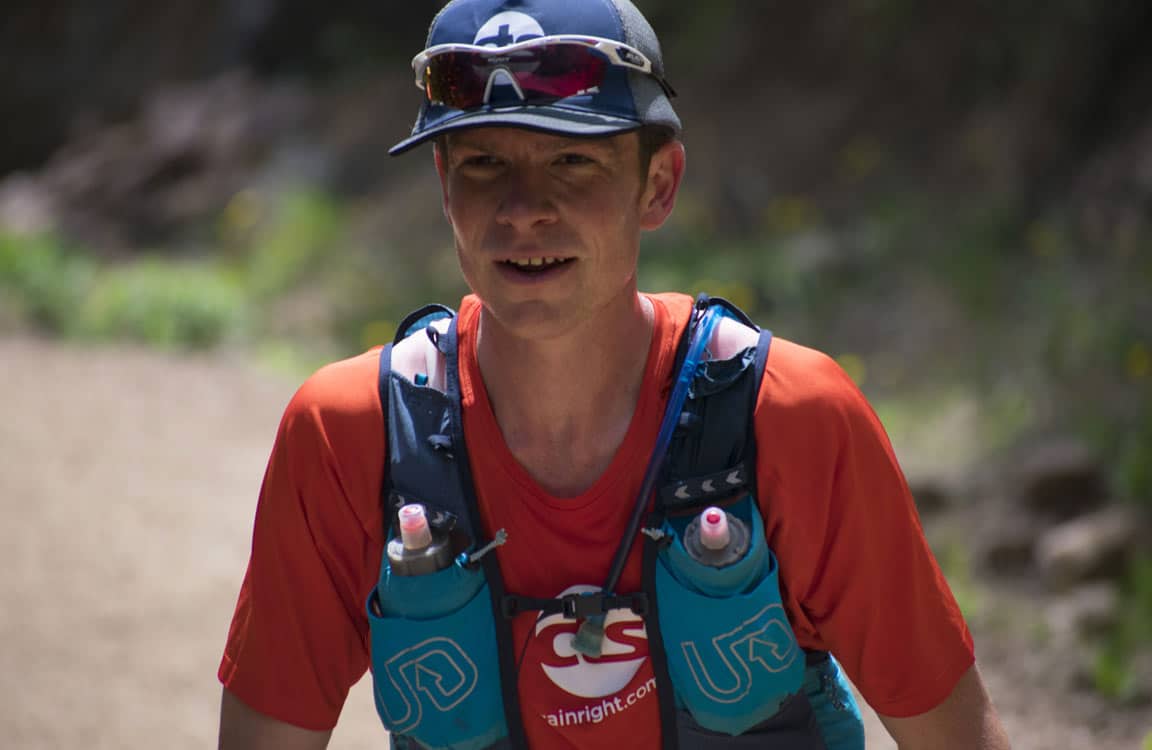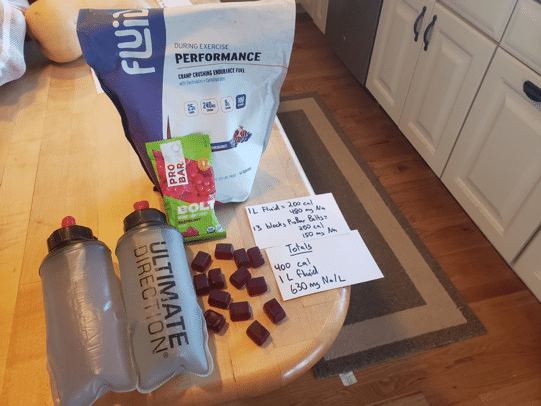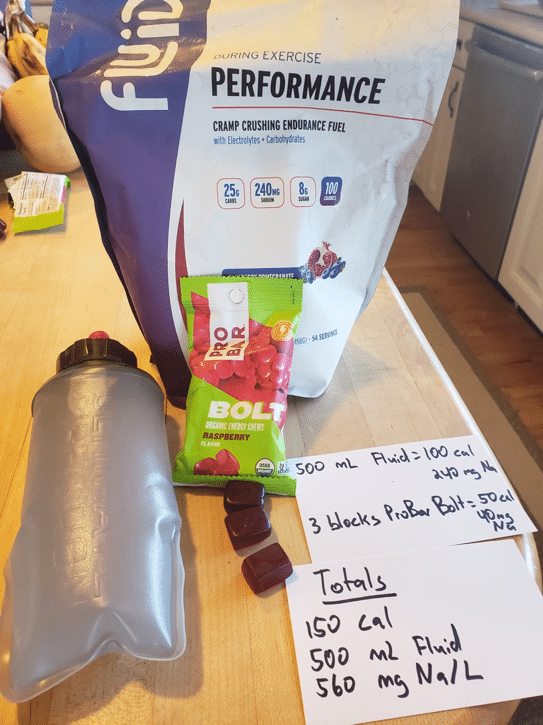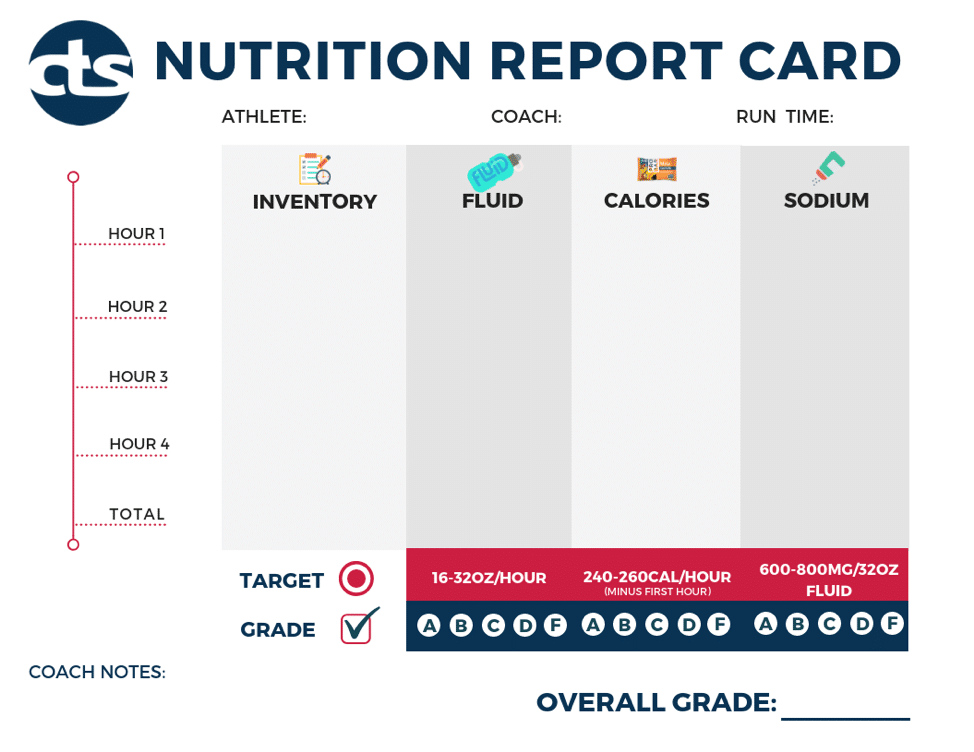
Key Takeaways from ISSN Position Stand on Ultrarunning Nutrition – Part 2
By Jason Koop,
Head Coach of CTS Ultrarunning
In September of this year, the International Society of Sports Nutrition (ISSN) came out with a new position paper titled “Nutritional considerations for single-stage ultra-marathon training and racing”. You can view the whole paper, in its entirety, for free here. It’s about a 40 minute read and moderately digestible for any audience. If you want any further detail, I encourage you to check it out in the paper’s entirety. This article is the final part of a two-part series reviewing the recommendations. The first article focused on day-to-day nutrition and can be found here.
Don’t pull your hair out
Before I dive into the recommendations themselves, a word of caution. You are going to be frustrated if you try to implement the recommendations at face value. It is inherently challenging to create individualized, specific recommendations about race nutrition. Athletes will have their own taste preferences, caloric needs, and even sodium requirements. Furthermore, some of your nutrition plan will be dictated by the environment, and hydration requirements are largely dependent on temperature. All of this variation results in recommendations that can vary three to four-fold from the bottom part of the range to the top part. For example, the recommended caloric range for a 50-mile race is 150-300 cal/hour and 200-400 cal/hour for the 100-mile distance. That’s a twofold difference from the bottom end to the top, literally two gels worth per hour (for 100 miles) and an enormous difference. Just think how you would react if you were given a similar recommendation range on pacing. If your coach told you, “Well, you could run 8 min-per-mile for the first 10 miles or 16-min-per mile for the first 10 miles.” You’d look at them as if they were an alien (and then you should fire them). Nutrition should be no different. And to give fair credit to the ISSN team, much of the dialogue permeating throughout the paper is to individualize your plan as much as possible.
To put the ranges in perspective, here’s how they look visually, based on an athlete consuming Fluid as their sports drink and ProBar Bolts for their fuel source.

Figure 1- Top end of the range with 400 cal, 1 L fluid (which is technically slightly over the range) and 13 individual Bolt chews

Figure 2- Bottom end of the rage with 500 Ml fluid and 150 calories. Note the mere 3 individual Bolt chews
That being said, rather than put a lot of emphasis on some of the particular ranges and how the researchers came to those conclusions, I am going to present them in a simple table and then walk you through how to practically narrow those ranges down for your individual circumstances.
| ISSN Recommendation | Range | Caveats |
| Calorie consumption | 150-300 cal/hour | For ultramarathons <50 miles |
| Calorie consumption | 200-400 cal/hour | For ultramarathons >50 miles |
| Fluid consumption | 150-250 mL/20 min (450-750 mL/hour) | Depends on temperature, intensity, etc |
| Sodium consumption | 500-700 mg/L of fluid | From all sources of Na (food, drink, etc) |
Dialing in your intake with the Nutrition Report Card
At our CTS Ultrarunning camps, we take one day and completely focus on nutrition. The conduit for this is a report card that the athlete fills out at the end of the run, which is then graded by one of our coaches. Using the discarded wrappers as inventory, the athlete tallies up how many calories and how much fluid and sodium they consumed. While the arithmetic effort is along the lines of a middle school math class, the lesson is insightful because most athletes have little clue how many calories, carbohydrate and sodium are in the prepackaged sports nutrition products. Any ‘real food’ consumed, like a handful of chips or a quartered PB&J, is even more problematic (how many potato chips are in a fistful?).
Rather than give the athletes an enormous range like the ones recommended by the ISSN, we narrow our targets to 240-260 cal/hour for a ~4-5 hour run. This essentially splits the middle of the ranges. More importantly though, it’s relatively precise, which forces athletes to actually think about what they are doing, and therefore reinforces the educational aspect.
You can download our nutrition report card below. Feel free to use it yourself on your next long run.
Once athletes know what ~250 cal/hour is actually like, we encourage them to adjust up or down based on their individual tolerance. Generally speaking, this means nudging the caloric consumption up for longer distances and down for lower distances.
The most important part of the process is education.
► Free Cycling Training Assessment Quiz
Take our free 2-minute quiz to discover how effective your training is and get recommendations for how you can improve.
Narrowing in your fluid needs
From the chart above, hydration needs can come in at as little as ~450 mL all the way up to 750 mL per hour (that’s 15.2 to 25.4 oz for those not in the metric system). Once again, this is a huge range. Also, as the authors concede ‘Drinking-to-thirst is an acknowledged means of maintaining hydration during short-duration exercise (<90 min), when environmental conditions are cool, and exercise intensity is low’. Not really applicable in an ultramarathon setting.
► Free Ultrarunning Training Assessment Quiz
Take our free 2-minute quiz to discover how effective your training is and get recommendations for how you can improve.
Before I go on, a quick digression… I remember several years ago when the ‘drink to thirst’ recommendation came out by the American College of Sports Medicine (ACSM). The recommendation flew in the face of what coaches and athletes had been told for years previous – ‘drink all that you can’. While the ACSM’s initial recommendation was deliberately broad to cover all endurance activity, they have subsequently issued caveats for longer duration events. Yet, the ‘drink-to-thirst’ recommendation still hangs around in the ultramarathon world. Professionally speaking, I think it’s time to squash that idea. Anyone that has been parched by inhaling in trail dust for several hours, or had the roof of their mouth sunburned during the Badwater ultramarathon (raising my hand on both) knows that after a certain point during an ultra, your thirst sensation goes out the window. Hell, most of your sensations will go out the window given enough time and distance. Ultrarunners are better served by knowing what their sweat rates are in a variety of conditions, and then applying that knowledge to tailor a hydration plan on race day. Or, as the authors of the ISSM paper put it: ‘Individuals wishing to optimize performance should determine their individual sweat rates, in advance, under conditions which resemble competition.’
Here’s how to do it-
- Weigh yourself nude right before a run.
- Go do a one hour run at EnduranceRun intensity.
- After the run, strip down, wipe down any sweat, and weigh yourself nude again.
- Subtract your end weight from your beginning weight. Convert the weight to ounces (one pound equals 16 ounces). This is your hourly sweat rate in those specific conditions.
- Aim to replace ~90-95% (not 100%) of those fluids. Why not 100%? Because in an ultra, weight loss from water stored in fat and carbohydrate are significant and does not need to be replaced. We don’t quite know exactly how much fluid needs to be replaced, we just know it’s not 100% as some of the fluid loss stems from metabolic processes not related to hydration status. Replacing 100% of the sweat loss in an ultra can lead to hyponatremia, or low blood sodium.
- Repeat the test in different conditions. I recommend using 10 degree Fahrenheit differences.
When you go to map out your race day hydration plan, you can use the results of this sweat test and map out your hour by hour fluid needs.
The less complicated stuff: electrolytes
Now onto something less complicated, electrolytes. The ISSN statement recommends 500-700 mg of sodium per liter of fluid consumed. The drink manufactures have fortunately made this easy for you and most high quality sports drinks are near this range. Even in the case where the sports drink you choose is a little light on sodium, it’s pretty easy to get in the right range by adding normal sports nutrition and other foodstuffs to your plan to make up the difference. Not discussed in the paper is the role of salt tablets in the equation, so I will give you my personal take (which I’m never afraid to do). Salt tablets are generally not necessary and can cause overdrinking, so it’s better to avoid them and get your sodium from a combination of electrolyte drink, gels, chews and real food.
Savory vs. Sweet
I love the fact that the ISSN team spent a whole section on savory vs. sweet food stuffs. Generally speaking, ultrarunners tend to favor more savory foods containing greater amounts of fat and salt at the end of ultras. This is a result of a combination of flavor fatigue (too much sweet for too long) and/or nutritional inadequacies (not enough fat/protein or salt) from earlier in the race. In either case, I recommend that athletes develop their own bulls-eye nutrition plan that contain sweet, salty and savory foods throughout the course of training. This will ensure not too much of one flavor is utilized throughout the race as well as make sure there is some fat and protein consumed along the way (the ISSN team calls for ~10-25% of calories to come from protein with some fat added into the mix).
Quick hits on other ergogenic aids
Caffeine, MCTs, ketone esters, vitamins/minerals and…
Coffee lovers rejoice! Yes, caffeine is still an ergogenic aid and will help your ultramarathon performance. However, because ultras are so long, ultrarunners would be wise pay attention to the timing and total amount of caffeine ingested. Specifically, the research team suggests that does of 50 mg per hour should be well tolerated for several hours. Additionally, if your ultra will run into the night, you should consider saving your caffeine until early in the evening to help with alertness.
On the other side of the spectrum, there simply is not enough data to support the use of medium chain triglycerides, ketone esters, L-gutamine (and BOY have ALL of those been in the popular news enough lately) and vitamin C. While there are theoretical mechanistic and bio-plausible (trying to get all of the buzz words in today) ways in which these supplements can work, there is just not enough data to support their use. Nonetheless, I am sure that athletes and some coaches will continue to purport the use and efficacy of these ergogenic aids. I think you are better off saving your money, go someplace interesting, and do a training camp.
Enjoying This Article? Get More Free Running Training Tips
Get our coaches' best training advice, delivered straight to your inbox weekly.
Finally, from the MC Hammer ‘can’t touch this’ category, just stay away from NSAIDs such as Naproxen (Alleve) and Ibuprofen (Advil). They can have serious effects on your kidneys, gastrointestinal system and musculoskeletal system. I love the author’s final statement on NSAIDs which reads: ‘Caution is urged, therefore, against the frivolous and systematic use of analgesics (NSAIDs) for symptom-masking’. A supplement that has zero upside and all downside is frivolous indeed!
There you have it! A full buffet’s worth of nutrition information! If you were to take just a few pieces of advice from the last two blogs, let it be this-
- Get the basics right. Be reasonable with your day to day nutrition strategy and cover your caloric expenditure needs first. Going very high (>80% of calories) in any macronutrient (Carb, Fat or Protein) is just going to cause issues.
- Train the gut. Practice your race day strategy in training. Incorporate different foods so that you have a variety of flavors come race day
- Educate yourself. Take an inventory of what you are eating and drinking. Find a target range, hit that, and adjust from there based on your needs
► FREE Mini-Course: Learn How to Maximize Your Limited Training Time
Learn step-by-step how to overcome limited training time and get faster. Walk away with a personalized plan to increase your performance.
"*" indicates required fields



Comments 3
Pingback: Who knew that drinking water could be so complicated
Pingback: Jak se stravovat během ultramaratonu? – ultrarunner.zh
Love all you articles!
I have a question. For someone who’s diet does not contain any added salt, would the requirements be different?